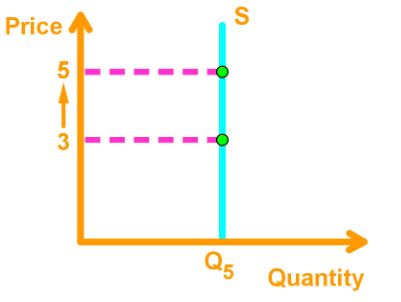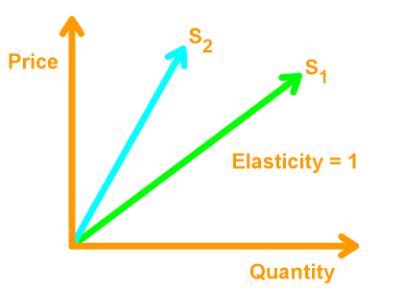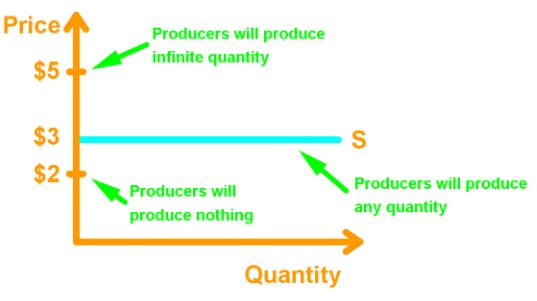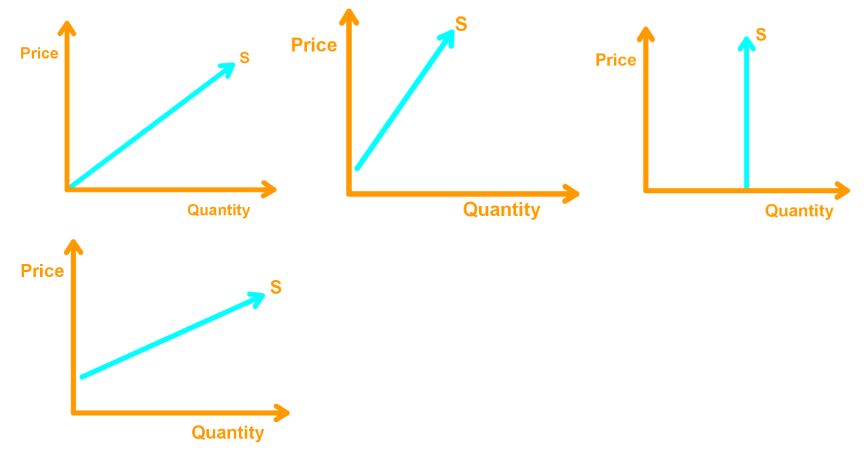Elasticity of Supply
To measure the responsiveness of quantities supplied to a change in the price of a good, we use the elasticity of supply.
In other words,
To calculate the elasticity of supply, we use the following formula:
Types of Supply Curves
There are three types of supply curves which have different elasticity of supply.
Case 1: Perfectly Inelastic
The supply curve is vertical and has an elasticity of supply of 0.

In this case, a change in price leaves the quantity of supplied the same.
Case 2: Unit Elastic
The supply curve passes through the origin and is linear. The elasticity of supply is 1. Note that the slope of the curve does not matte. The elasticity of supply will always be 1.

Case 3: Perfectly Elastic
The supply curve is horizontal, and the elasticity of supply is

Factors Which Influences Elasticity of Supply
Resource Substitution: If we can substitute resources to produce a good or service, then the elasticity of supply will be higher. With a small increase in price change, suppliers will produce more because they have more resource.
Time Period for Supply: The longer time passes after a price change, the greater the elasticity of supply is.
Momentary Supply: The longer time passes after a price change, the greater the elasticity of supply is.
Short-run Supply: When there is a price change, and we want to look at small adjustments that changes the quantity supplied, then we look at the short-run supply. Short-run supply is somewhat elastic.
Long-run Supply: When there is a price change, and we want to look at all possible adjustments that changes the quantity supplied, then we look at the long-run supply. Long-run supply is the most elastic.







